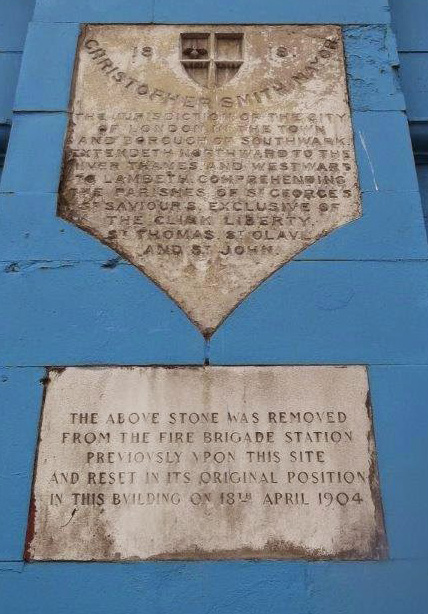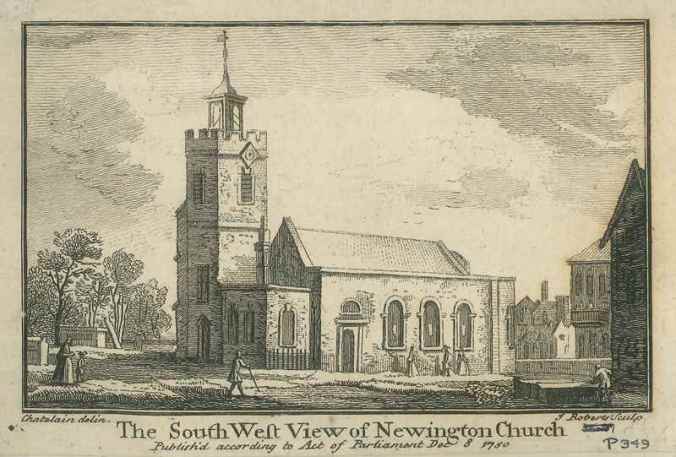The area around Borough High Street was the focus of the Pilgrim church in London. The first Brownist church met near Long Lane to the east of the High Street, and there is evidence that the second church, administered by Henry Jacob (1616-22), was in the parishes of St Olave and St Saviour around London Bridge. The third church, of Henry Jessey, seems to have formed around St George the Martyr and in Bankside, to the west. The Borough was also the site of prisons where pilgrims were incarcerated in response to their demands for freedom of speech and assembly.
Southwark Cathedral
The cathedral’s origins are in the Priory Church of St Mary Overie, built in 862 AD. The priory became the parish church of St Saviour, and in 1905 was designated a cathedral. The Pilgrim church of Henry Jacob had members who worshipped at St Saviour (as well as in their gathered church) and in 1604, when Jacob was in prison in the Clink, a Mr Philips bravely manifested sympathy with his views in the sermons he preached here. In the north transept is the Harvard chapel, dedicated to John Harvard the Puritan, pilgrim and benefactor of Harvard University. Delftware pottery dating back to 1612 has been found In the Chapter House, providing a connection to the Dutch puritan community. The new North Entrance doors, by Wendy Ramshaw were designed around the theme of pilgrimage.
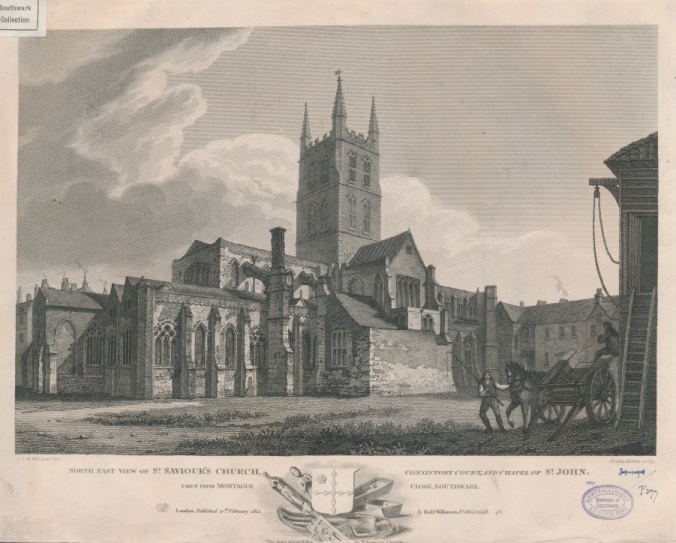
Southwark Cathedral in 1813, when it was still St Saviour’s Church
The George Inn
This Borough High Street pub was in existence at the time of the Pilgrims and may have been used by them, (there was no temperance movement in the 17th Century). It is the only galleried pub left in London and is mentioned in the writings of Charles Dickens. Nearby are the sites of The White Hart Inn, (mentioned by both Shakespeare and Dickens), The Tabard Inn, (later the Talbot Inn) where Chaucer’s pilgrims met before setting out, and the Queen’s Head Inn, owned by the family of John Harvard.
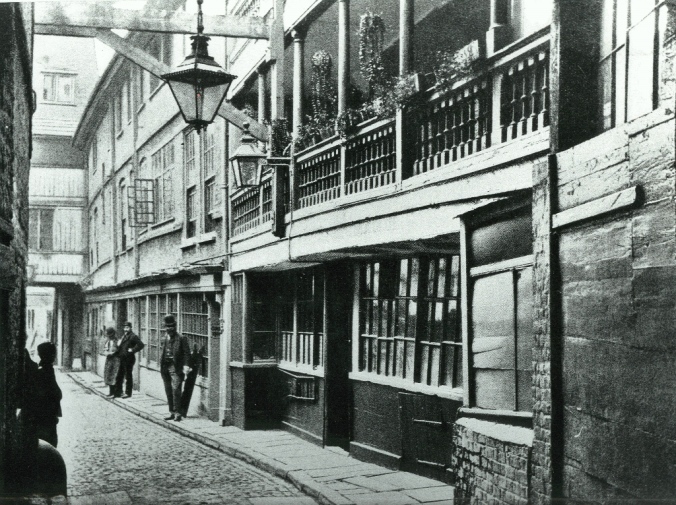
The George Inn in 1889
Angel Place
This alleyway, connecting Borough High Street to Tennis Street, was the address of the King’s Bench Prison, from where John Penry sent a letter in 1593, advising his followers to consider emigration. It also contains the remains of the second Marshalsea Prison, referred to in Charles Dickens’ Little Dorrit. The original Marshalsea Prison, where members of the Pilgrim Church were held stood 130 yards north of this point from 1373 until 1811. Adjacent to the alley is the John Harvard Library (also containing Southwark’s Local History Library and Archives) which bears a plaque in Harvard’s memory.
St George the Martyr Church and St George’s Garden
On the other side of Angel Place is the former churchyard of St George the Martyr Church, bounded by the Marshalsea Prison Wall. Henry Jessey was rector here, and in 1637 became pastor of the Pilgrims’ ‘gathered church,’ preaching at St George’s on Sunday morning and at the gathered church in the evening. Jessey is most well-known for his work with the Jewish community. An enthusiastic student of Hebrew, he used to correspond with Rabbi Mannaseh ben Israel in Amsterdam. Jessey successfully campaigned for the readmission of Jews to Britain and for the foundation of a college of Jewish studies.
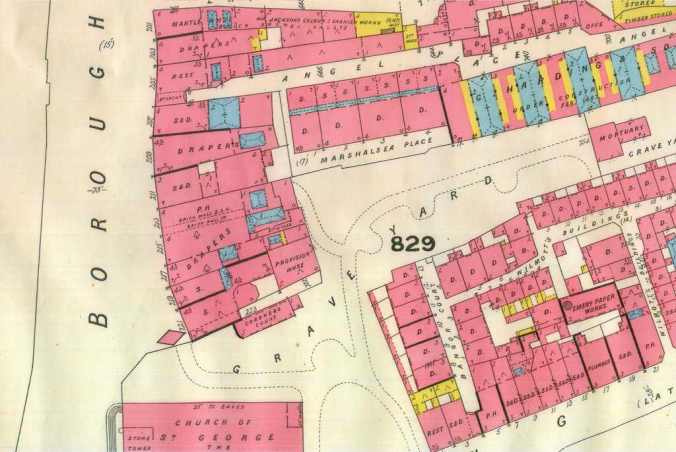
Plan of the area around St George the Martyr Church from Goad insurance map, 1887
